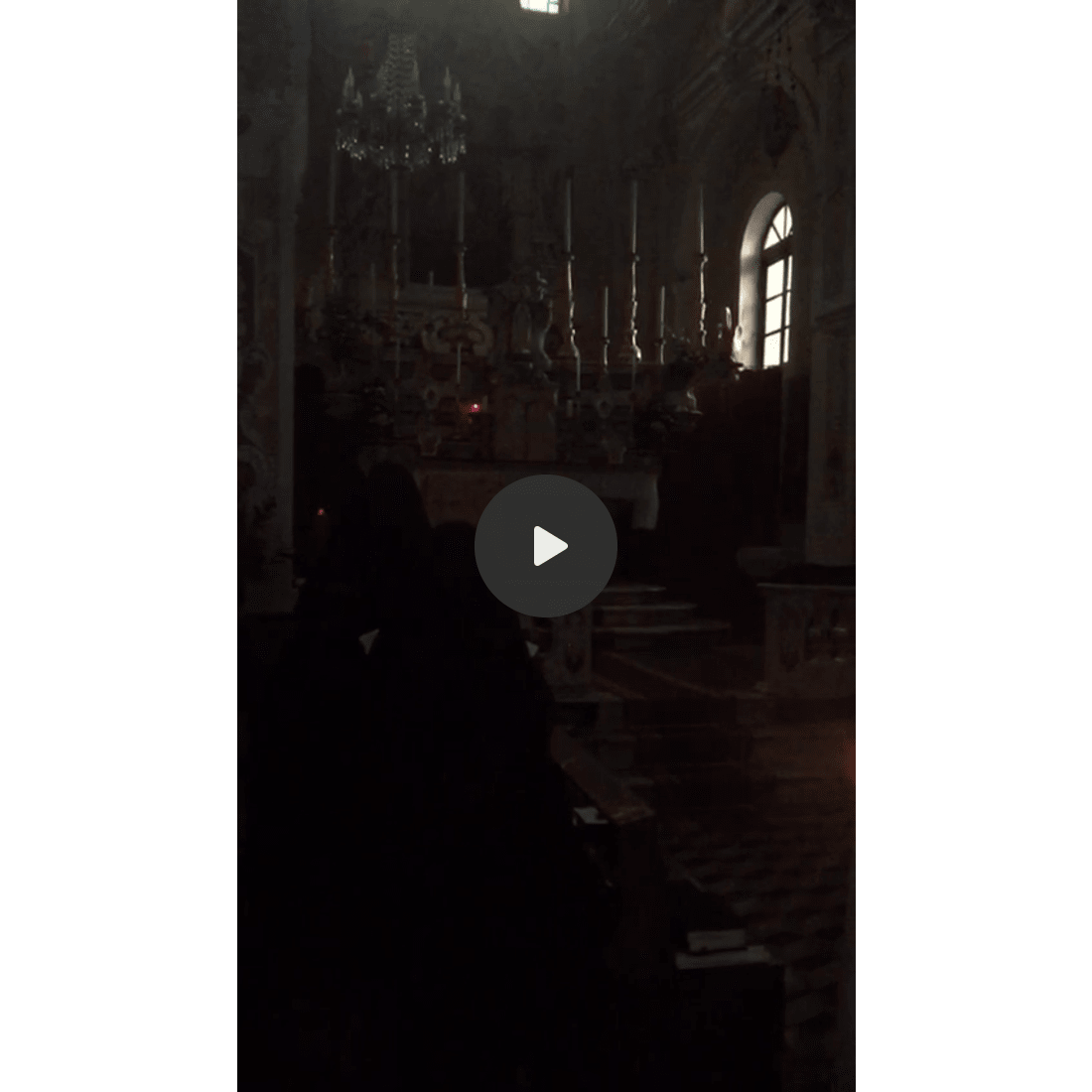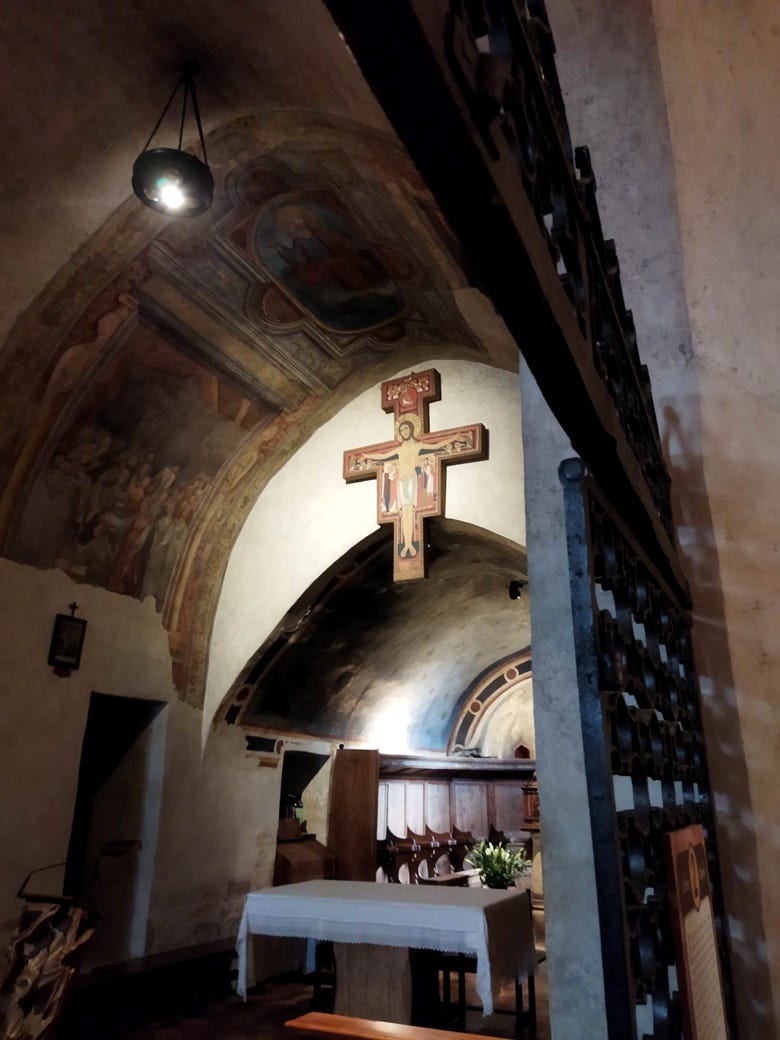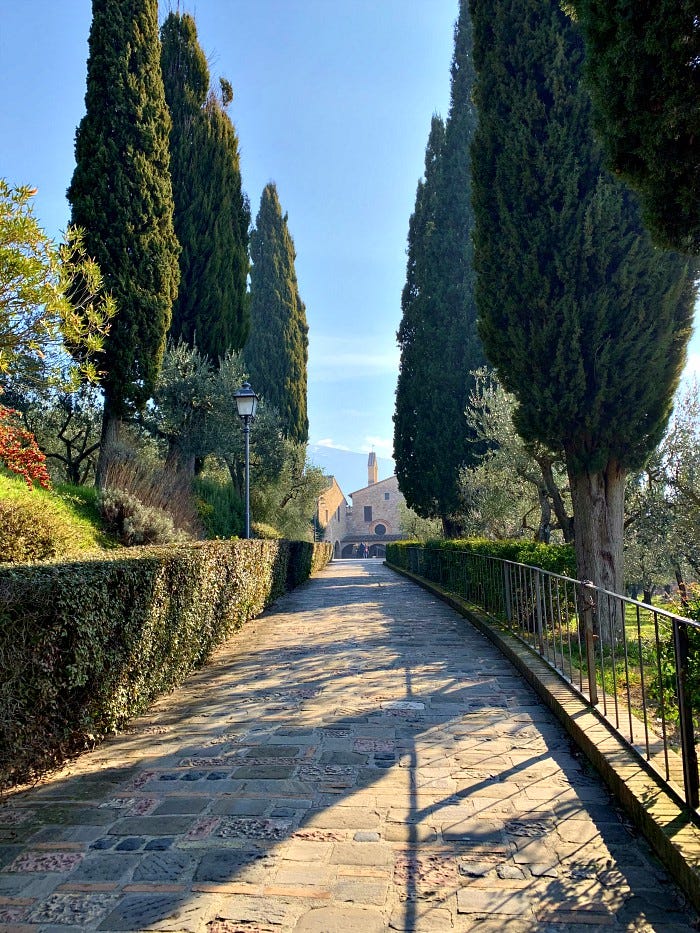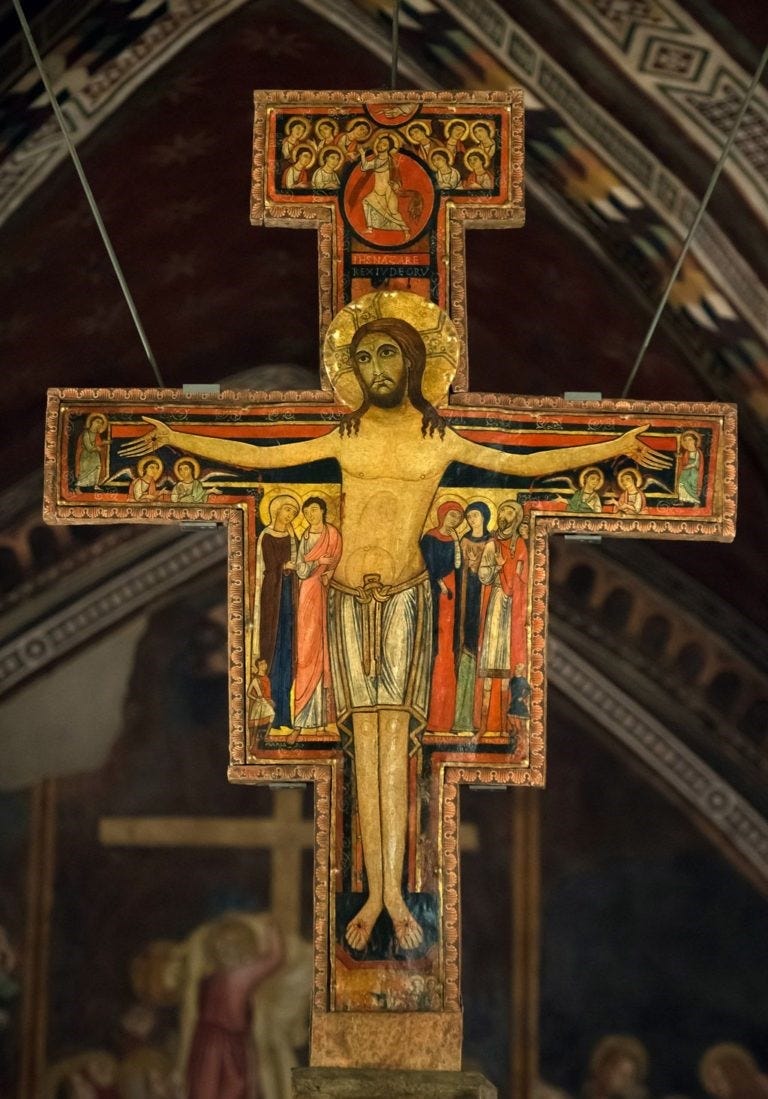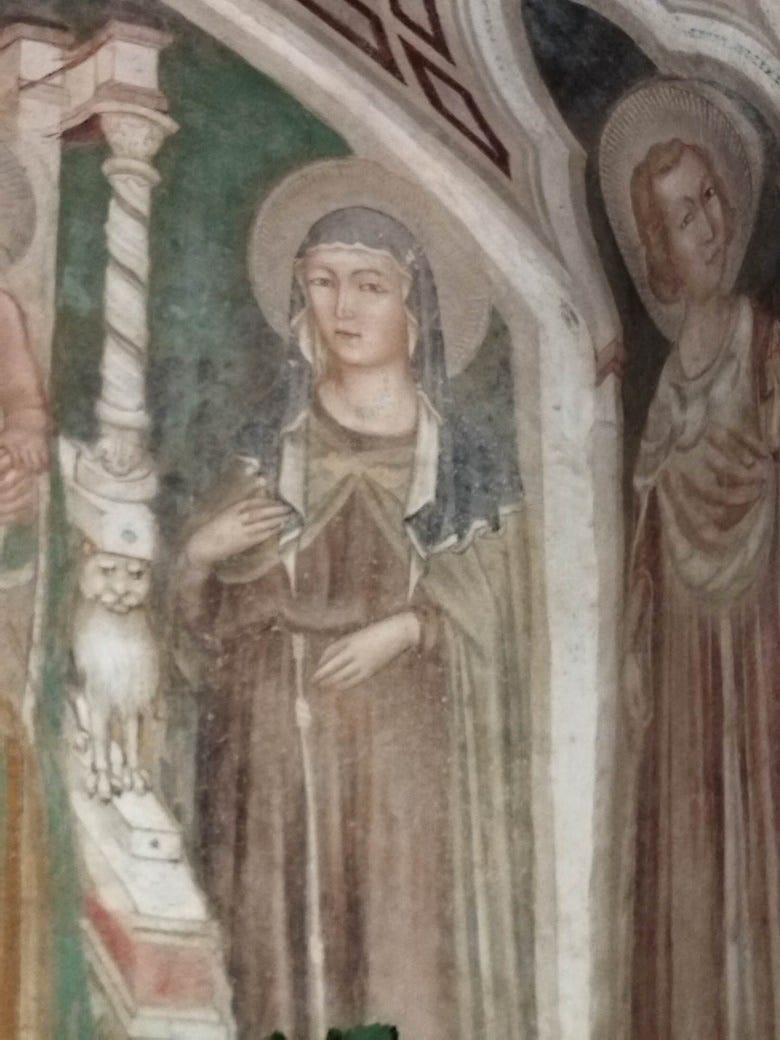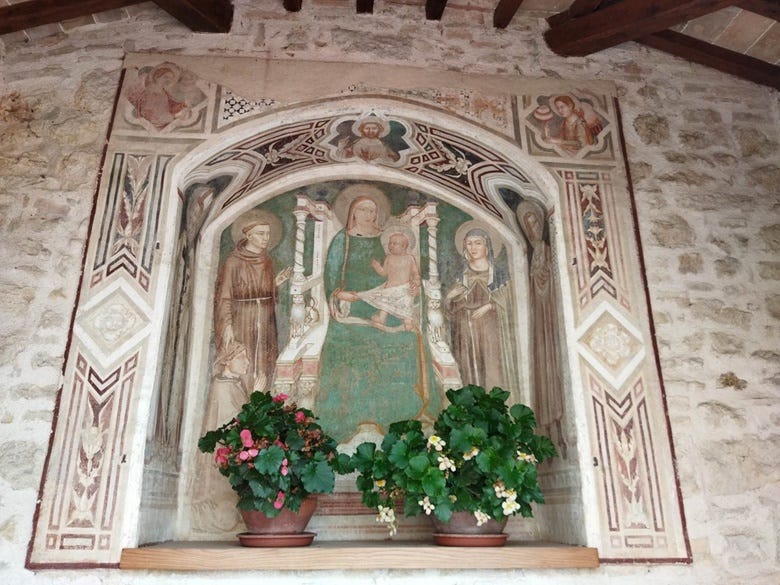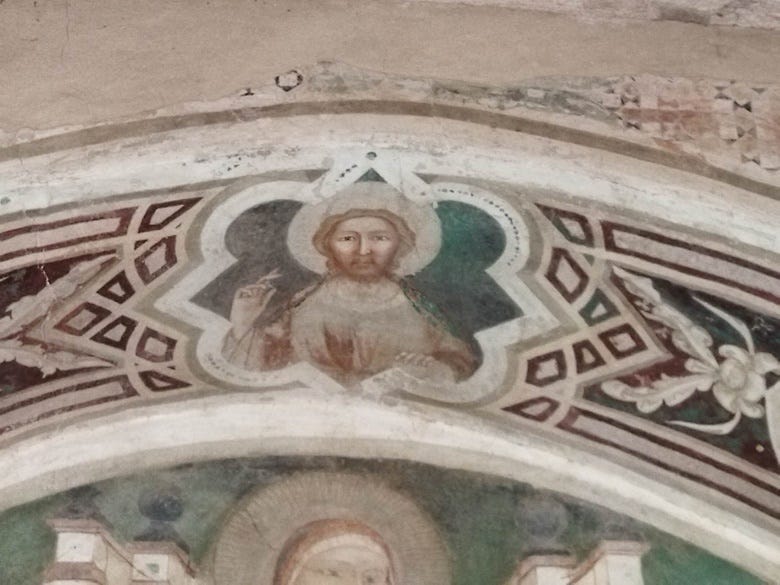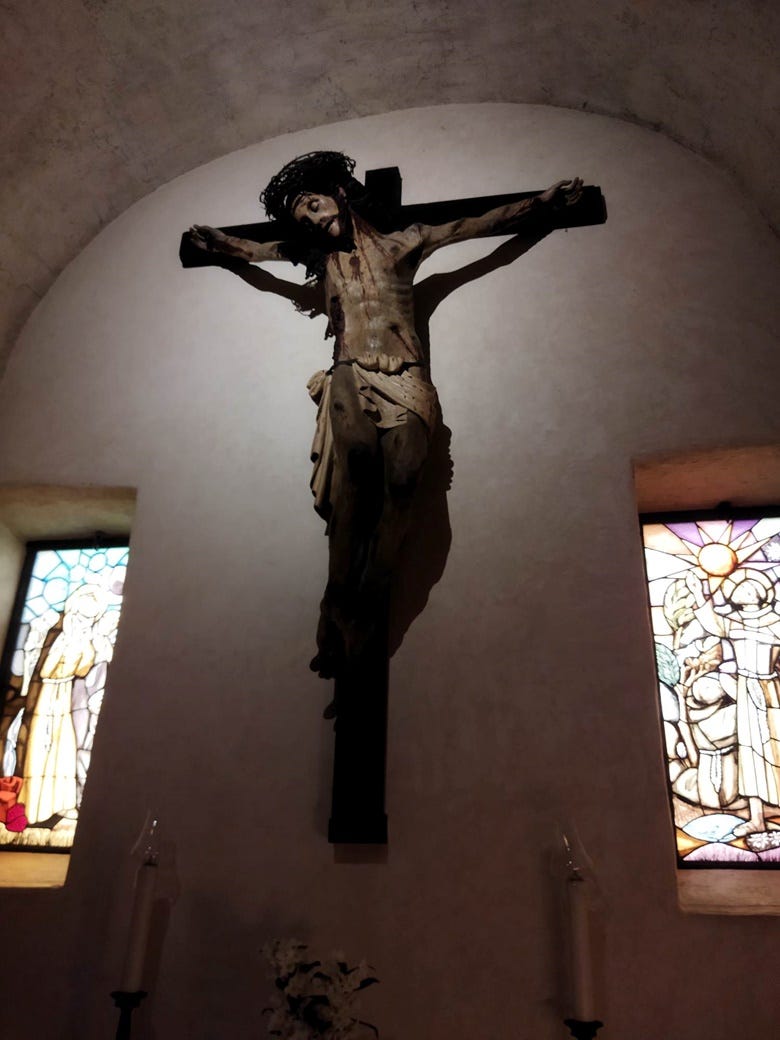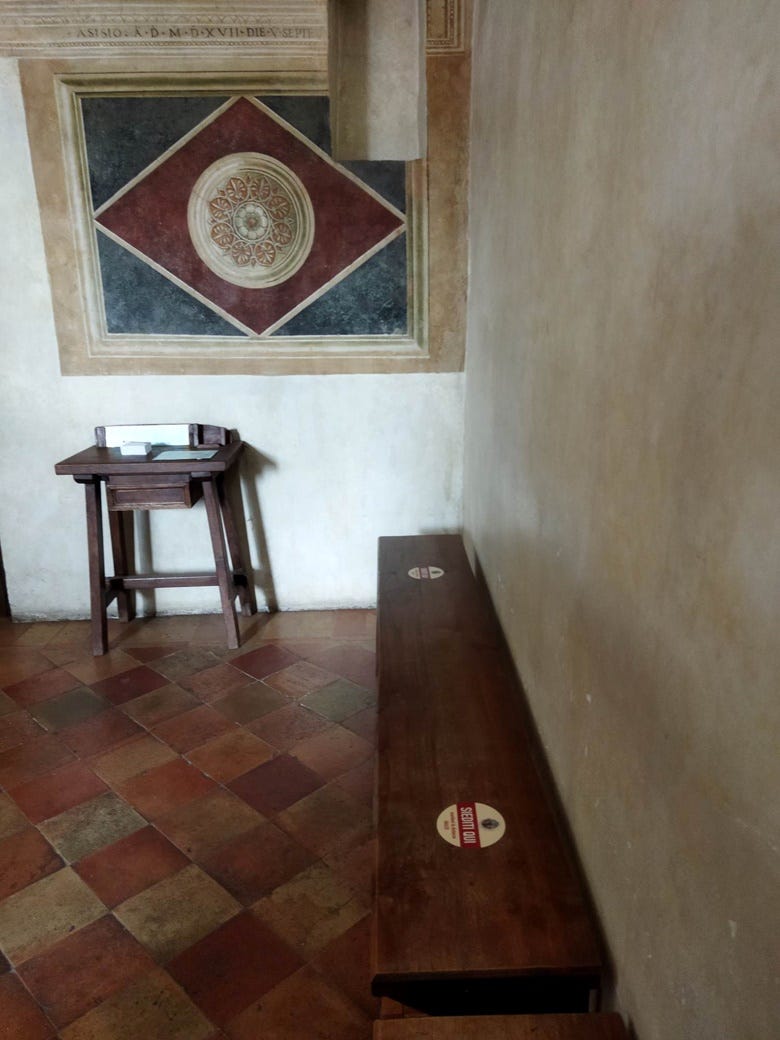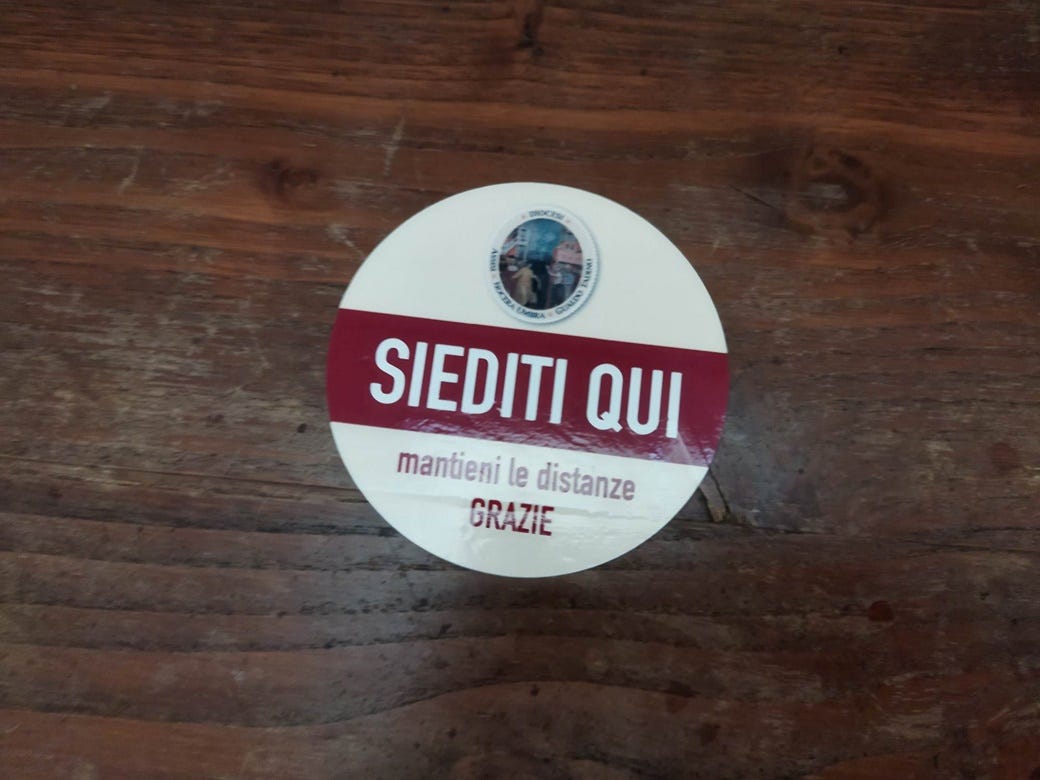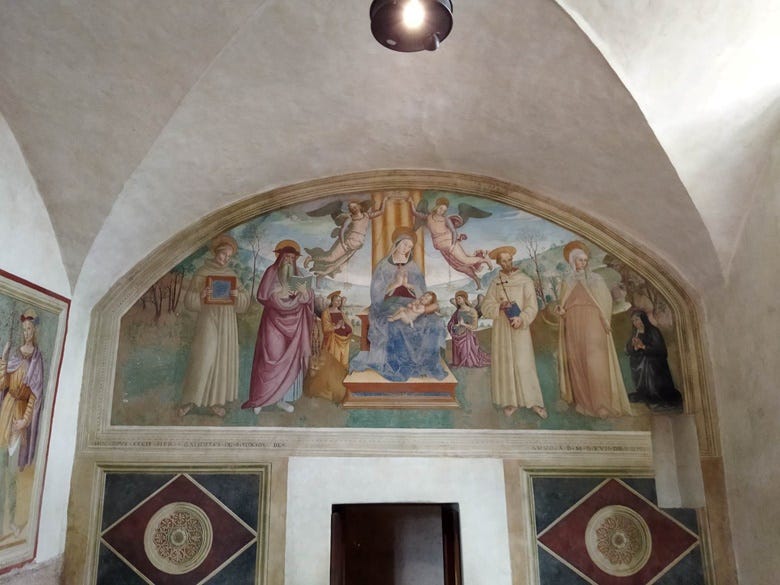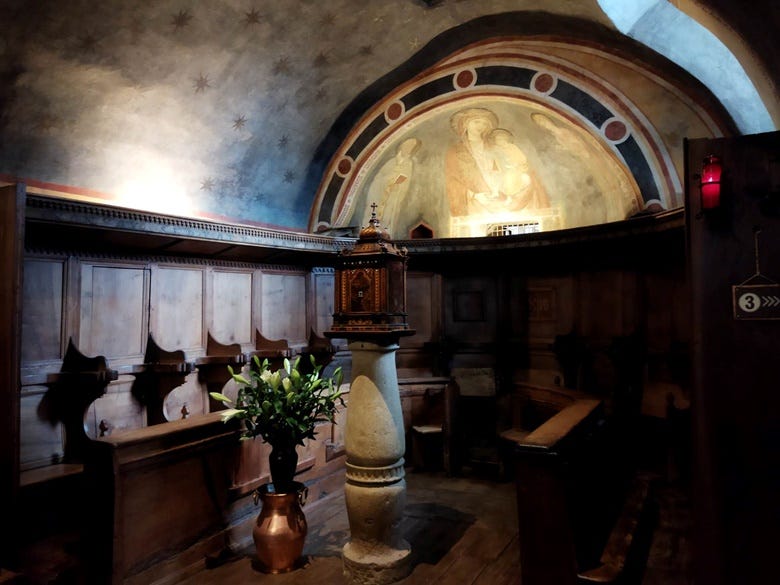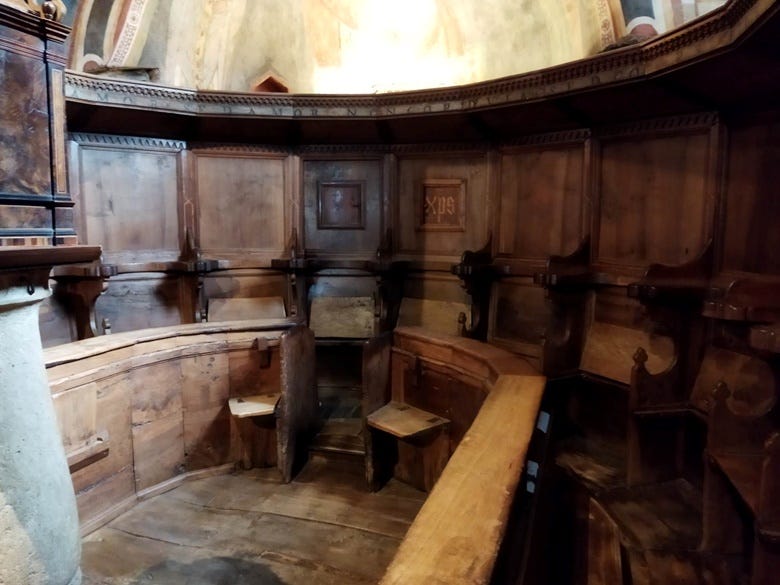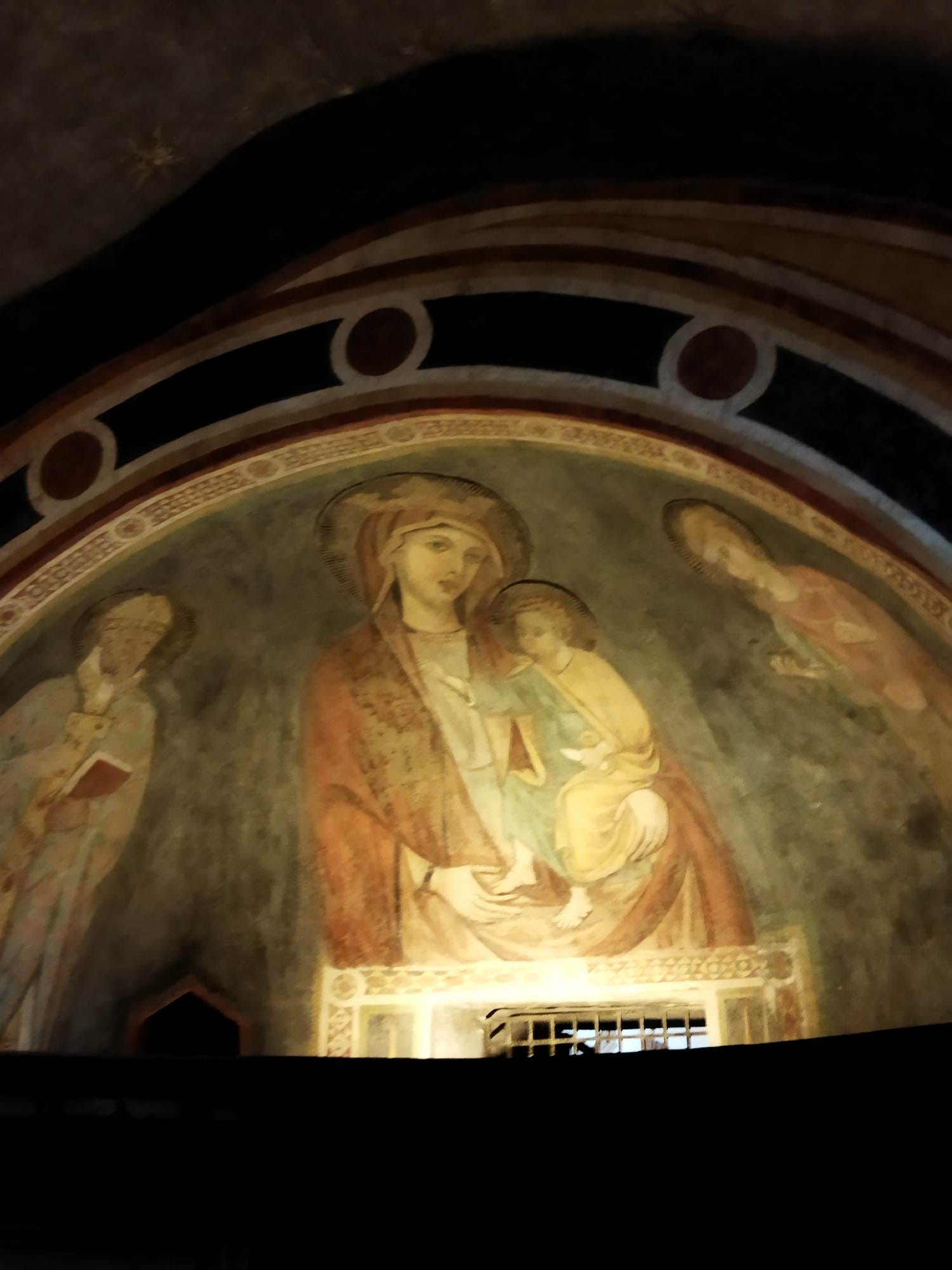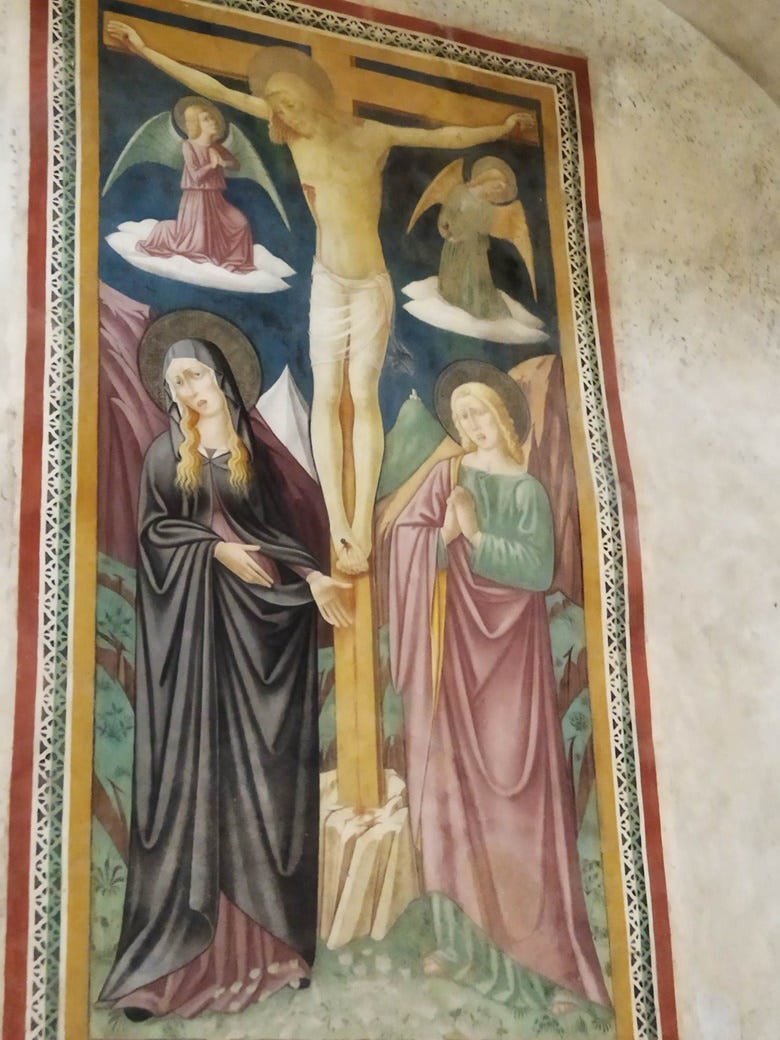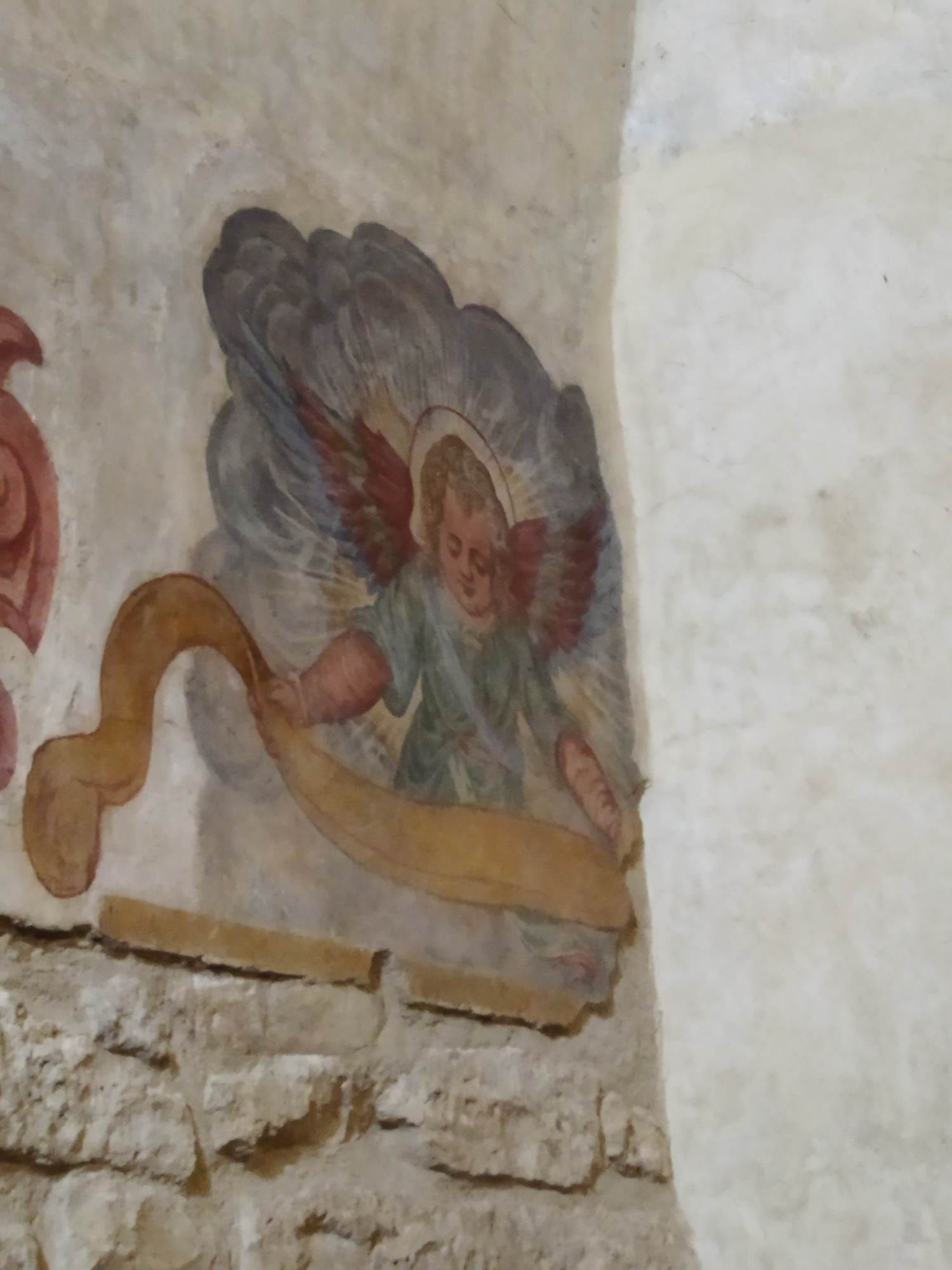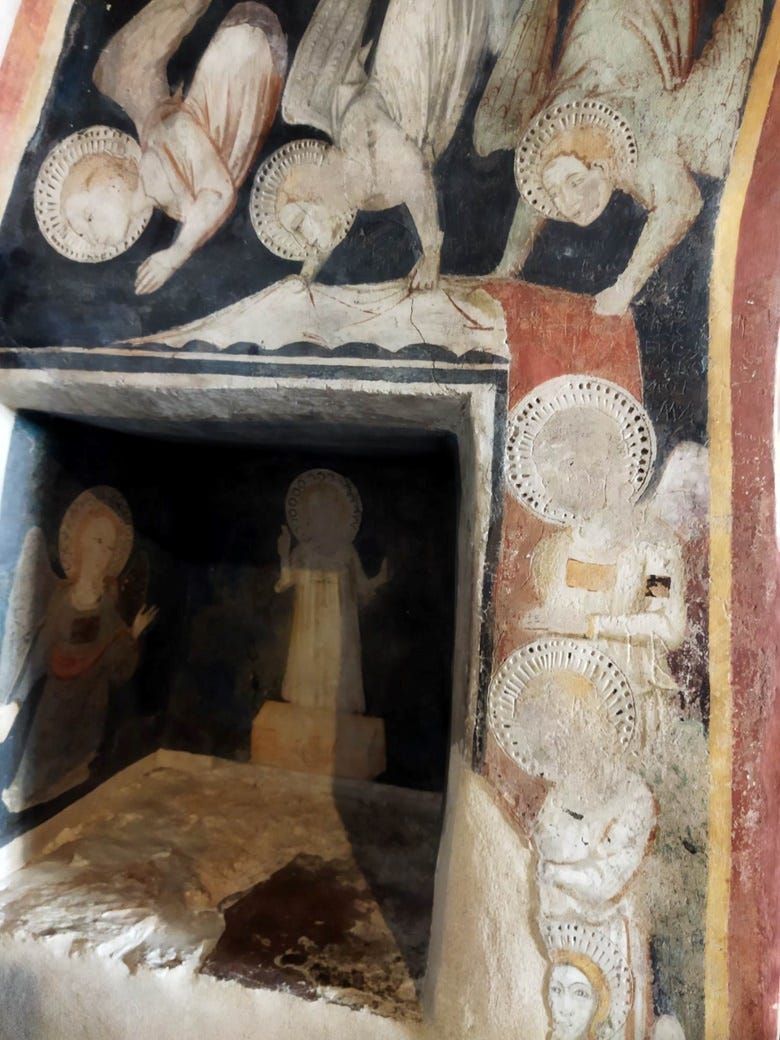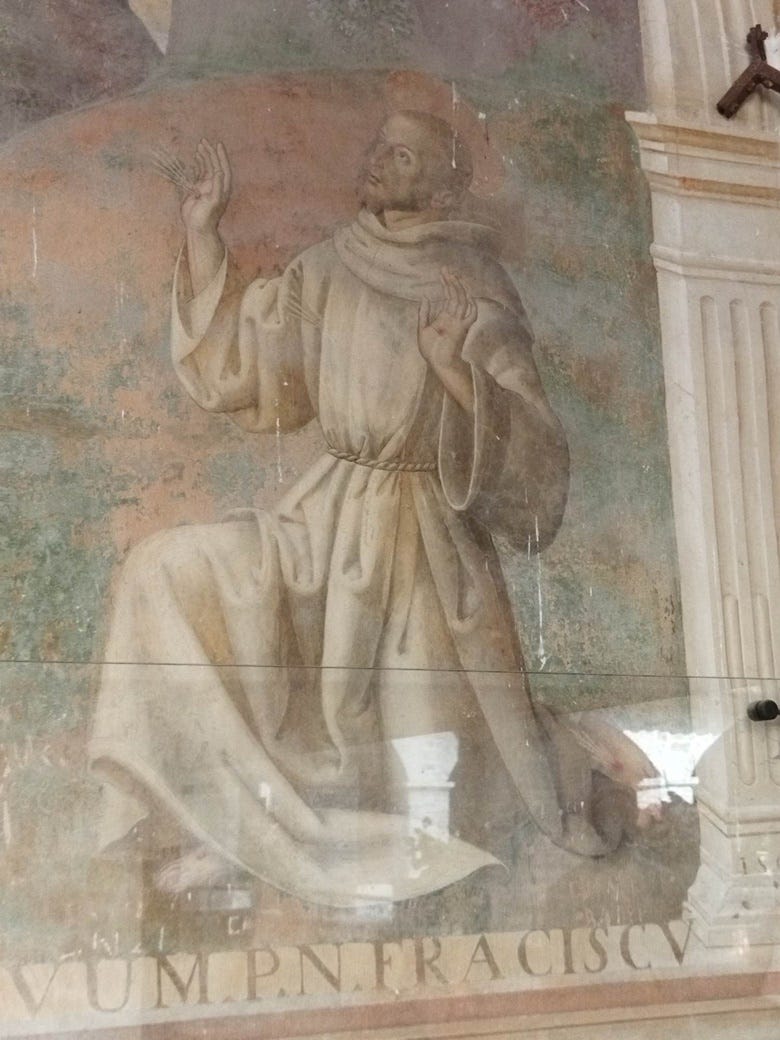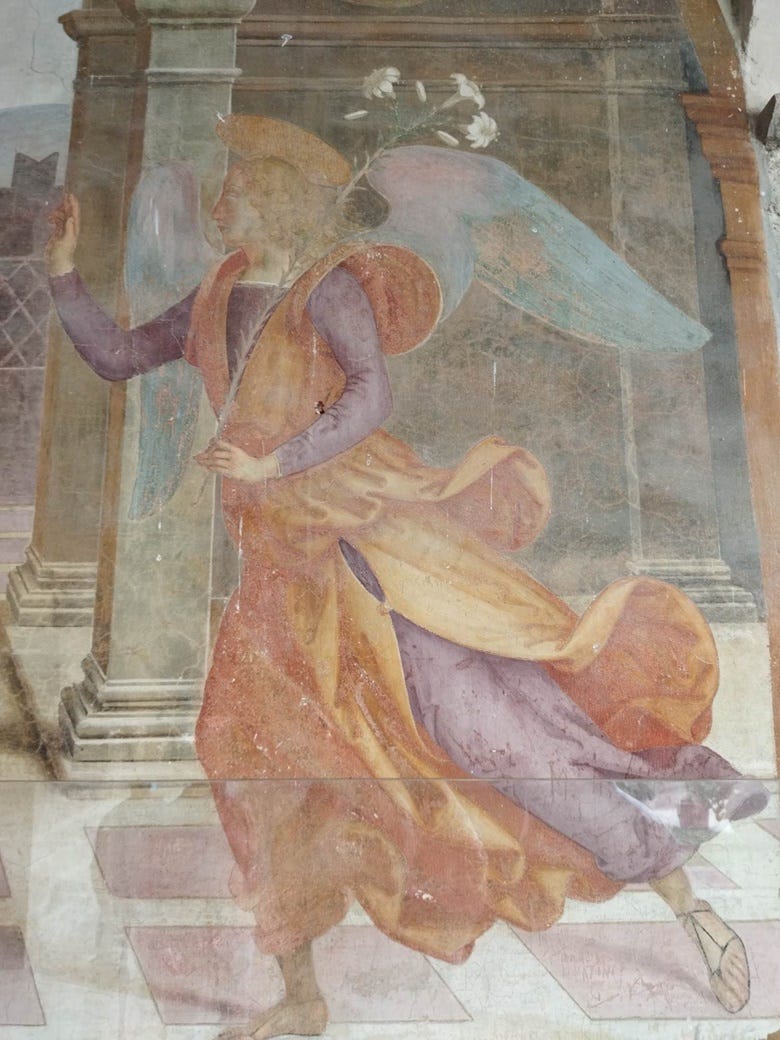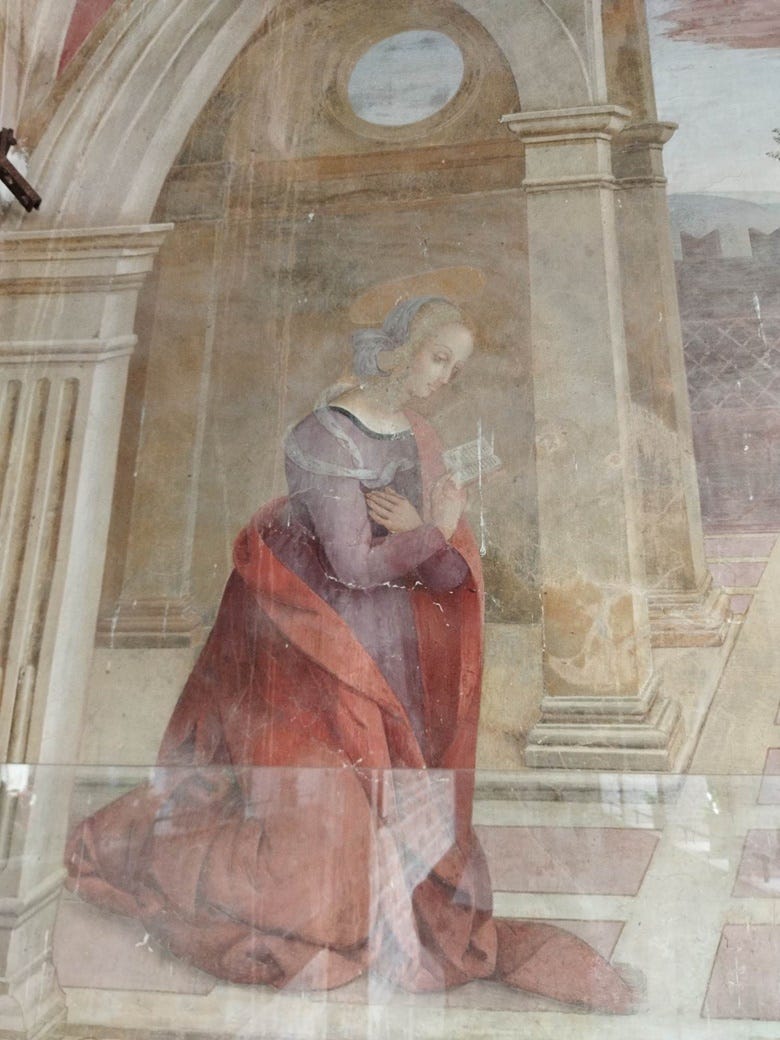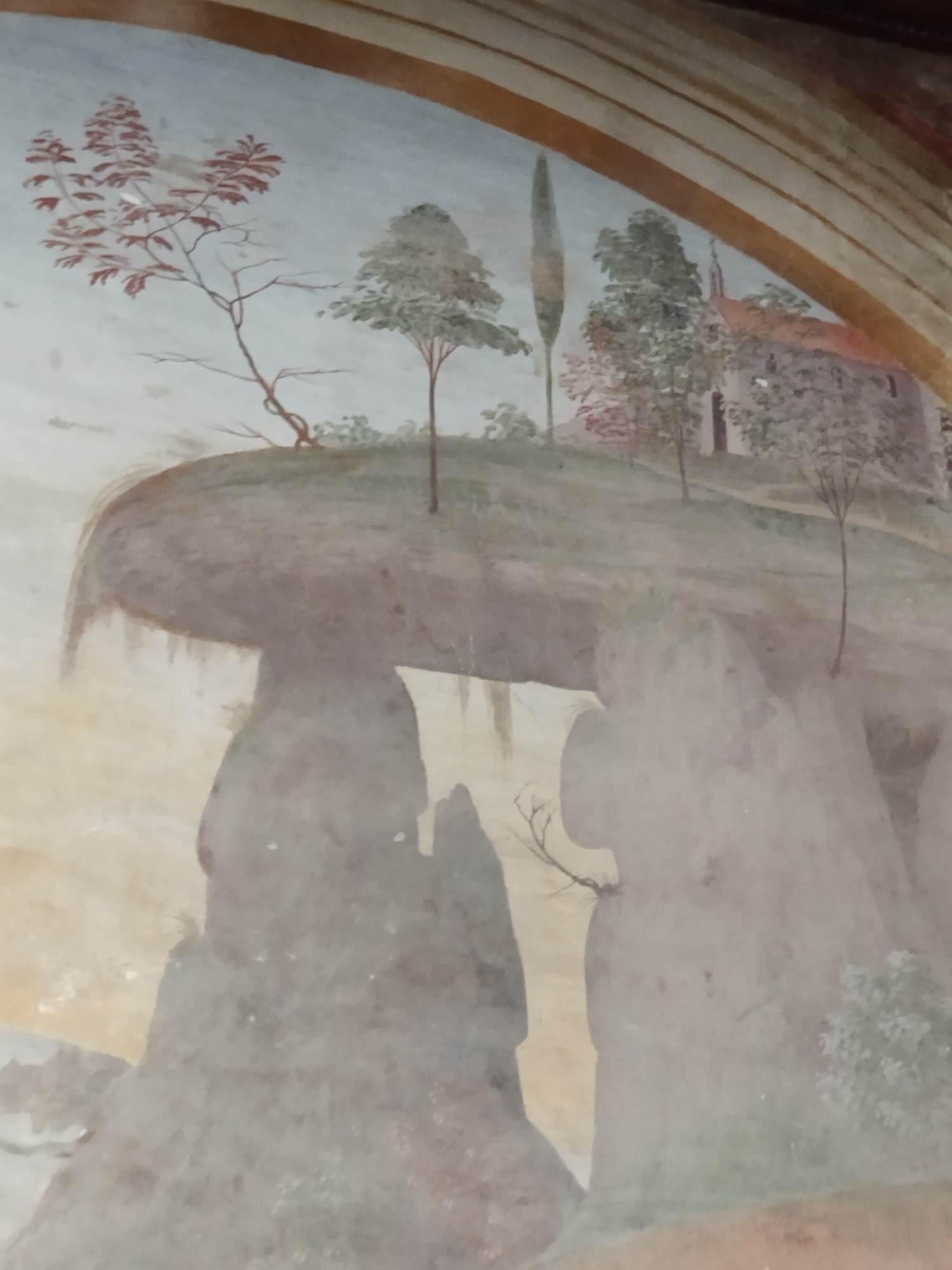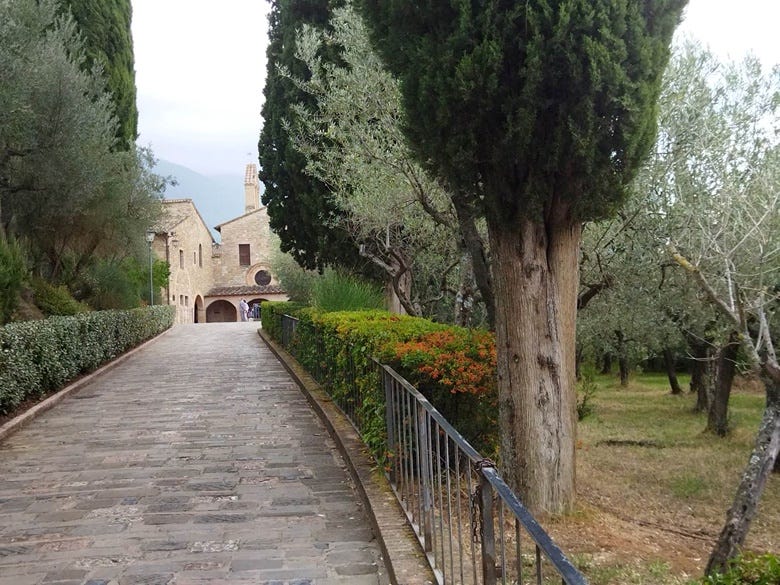San Damiano; a walking tour of the home of St. Clare of Assisi
07-15-2024
San Damiano; a walking tour of the home of St. Clare of AssisiBelow the fold, an invitation for paid members to join a book group
Although I am back from my most-of-the-week holiday last week, I’m still completely flattened. So, we’re just going to have another easy-going day. The following is a little walk-around virtual tour at San Damiano, the home of St. Clare of Assisi and her community of Poor Ladies, with some photos and videos I took a couple of summers ago. This is a post for all (free) subscribers, but there is a little addendum at the bottom for our paid members. I’ve had an idea, and wonder if anyone else might think it’s a good one… Salve Regina in the solemn monastic tone, the end of Compline in Villatalla, Liguria, on Wednesday evening.A walking tour of San Damiano, home of St. Clare of AssisiThe Sacred Images Project looks at art history and Christian culture through the lens of the first 1200 years of Christian sacred art.A big thank you to all who have signed up as free subscribers, we’ve had quite the burst in the last few days. And hello to our new paid members. Your contributions not only make it financially possible for me to continue this work, but are a tremendous encouragement to me that other people out there take these subjects as seriously as I do. This is my full time work, and I rely upon subscriptions and patronages from readers like yourself to pay bills and keep body and soul together. You can subscribe for free to get one and a half posts a week. For $9/month you also get a weekly in-depth article on this great sacred patrimony, plus extras like downloadable ebooks, high res images, photos, videos and podcasts (in the works).I hope you will consider taking out a paid subscription to help me continue and develop this work.(For those in straightened financial situations, fixed incomes and vowed religious etc., I’m happy to help. Drop me an email explaining and I can add you to the complimentary subscribers’ list.)The other way you can help support the work is by signing up for a patronage through my studio site, where you can choose for yourself the amount you contribute. Anyone contributing $9/month or more there will (obviously) receive a complimentary paid membership here.You can also take a scroll around my online shop where you can purchase prints of my drawings and paintings and other items.Built from the 10th to 12th century, San Damiano is the church where, in 1205, the young St. Francis first heard the call directly from Christ Himself.
In the early days of his conversion, Francis had come here to meditate, and the church, which though partially ruined, still housed the beautiful Romanesque painted crucifix that we all know so well today...
A pilgrimage to St. Clare of AssisiAfter our successful weekend, in which we drove back and forth twice to and from Narni - about an hour 20 away - in as many days, my friend Chris and I were both pretty tired out, so we decided to just do a short little day trip across the valley to Assisi, about 25 minutes from my house near Perugia. In keeping with my idea of doing little supporters-only videos, as a thank you to the people who have been so generous and helpful, here is a series of videos and pics I took yesterday as we walked around this holy and beautiful place. I wanted to ask the intercession of St. Clare for future big plans. So we had a St. Clare Day. San Damiano - where Mass is still celebrated (in the Novus Ordo, of course) - is just down the side of the mountain from the centro antico of Assisi. Even today it is still surrounded on three sides by sloped olive groves and farms, and on the other side with the full panorama of the Umbrian Plain at the foot of the mountain. You drive down the winding, switch-back road from the centro of Assisi and immediately find yourself in the country that must look very much today as it did 800 years ago in Clare and Francis' own time. You park in the little lot and walk up the long broad way to the monastery, lined with its famous row of cypress trees, with olives growing on all sides. It is a remarkably silent place. Closer to the buildings, this modern bronze statue of St. Francis in meditation has been placed. The Umbrian plain stretches out below. When you reach the courtyard in front of the church on one side is this alcove shrine decorated with a 14th century fresco (artist unknown). It still retains the strong Byzantine influence of medieval sacred art, with the Virgin and Child seated on a very eastern looking throne, flanked by Francis and Clare, watched over from heaven by Christ Pantocrator. On the sides are San Damiano and San. Rufino. At the bottom left you can see the figure kneeling in adoration that was, if it follows the custom of the time, probably a depiction of a patron of the monastery for whom nuns and pilgrims were asked to pray. St. Francis places his right hand - with stigmata - on the head of the patron, and with his left gestures toward the Child and His mother. Just before you enter the church is this little glimpse of the cloister gardens. The original church of San Damiano that Francis would have known has had a second room added to one side that is now the main entrance. This has an altar and beautiful 16th century crucifix, as well as benches where pilgrims can wait to be seen by a priest for confession or counsel. All with proper social distancing, of course... Above the entry way to the church is this beautiful 16th century tympanum fresco by a student of Perugino. You go through this doorway and after another small alcove is the entrance to the church itself. 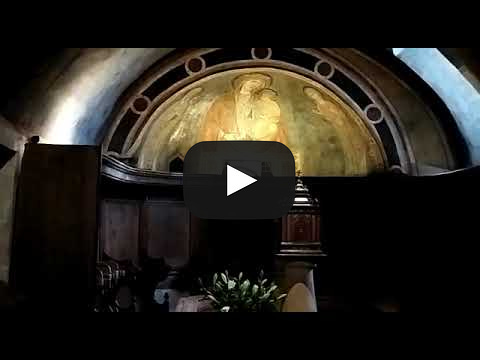 The panel crucifix there now is a copy of the famous miraculous panel painting, with the original transferred to the Basilica of St. Clare, up in the centro storico. When Chiara Offreduccio, the daughter of a local nobleman, heard his preaching in the streets of Assisi, that everyone in town was talking about, she was overcome with the desire to give her life to Christ in the same way he had, in total poverty and with a total devotion to Christ in deep prayer. The church and adjoining buildings of San Damiano was the place where the "Poor Ladies" settled to live this apostolic life of devotion, and the first "Poor Clare" monastery was founded here, where they lived until St. Clare's death. It is also here that she frightened away a group of Saracens by holding aloft the Blessed Sacrament.  From the church you go through another side door, and find the nuns' chapter room that was outfitted as a separate chapel in the 16th century. 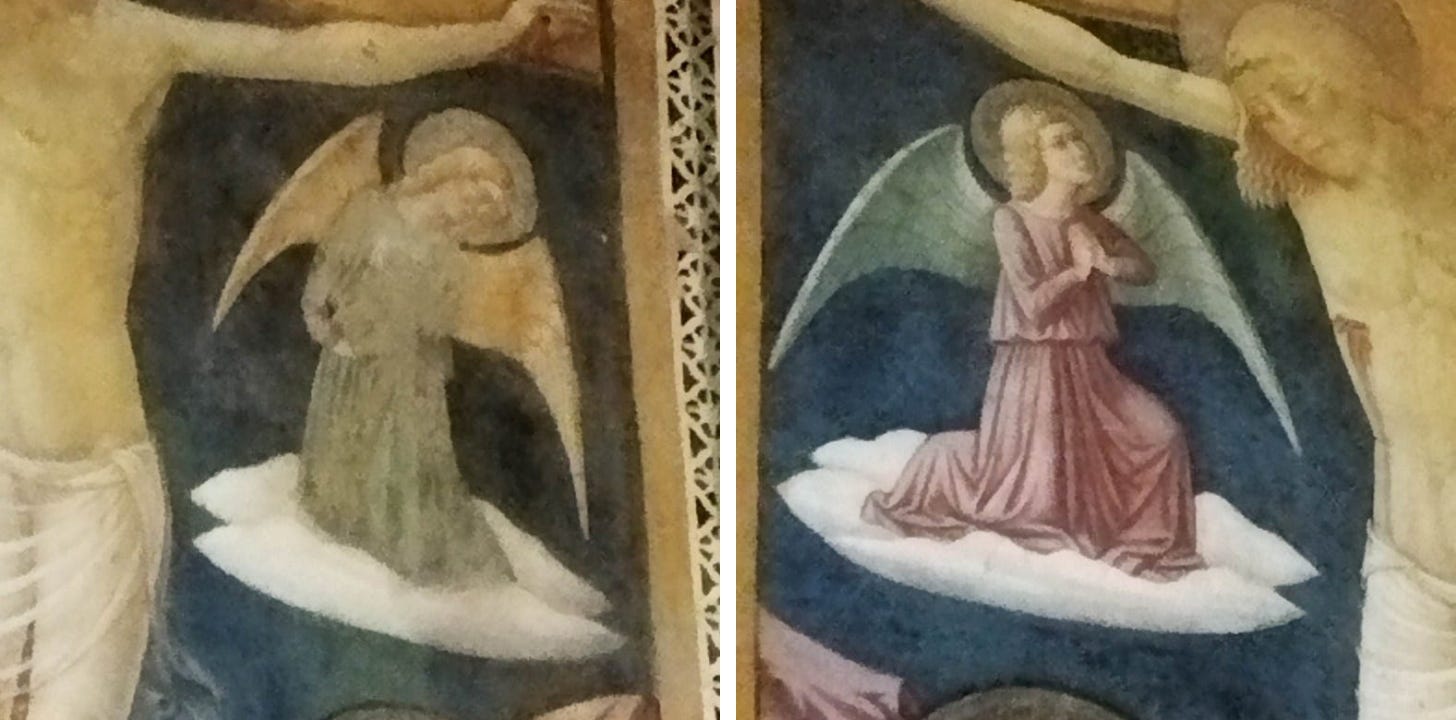 On the back wall is this beautiful quattrocento fresco. After Fra Angelico, but a more dramatic and expressive, and Umbrian, style, simple but striking. Around the corner from the door is this sweet little Baroque angel. The saint's oratory... 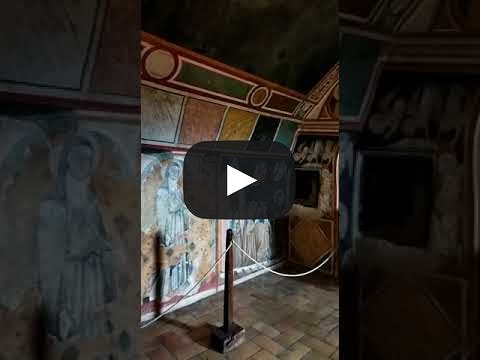 Then up the very steep stone stairs, past the little private garden terrace where the saint could take the air, to St. Clare's oratory. This is where St. Clare was brought toward the end of her life when she could no longer attend Mass in the chapel, and was granted a vision of the Mass at the Basilica of St. Francis in Assisi. The tabernacle alcove, decorated with an image of the Christ Child and angels in adoration. 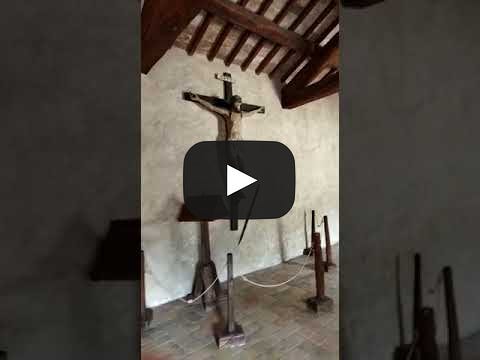 Next is up a few more steps to the sisters' dormitory, the place where St. Clare reposed in August, 1253. 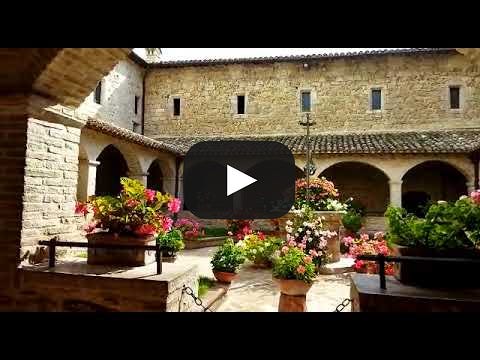 After this you walk through the door at the back and down some steps to a little gallery the friars have built recently for some contemporary art by various Franciscans (some of it not bad). Then down some more steps to the cloister garden. This is a lovely place to take a rest and have a quiet think, as the nuns would have in the day. There were several people going through the rooms as we were, and who were resting on the benches in the cloister at the same time we were, but no one spoke. There was none of the usual chatter of tourists or guides. It really is true that a great peace and stillness continues to hang about the place. 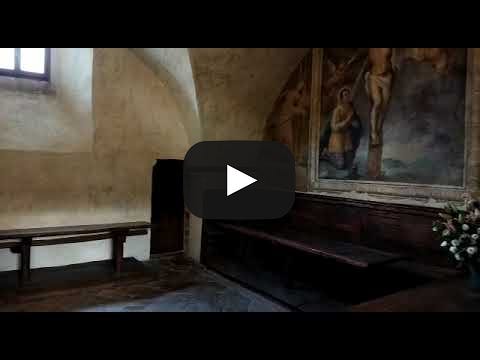 On the opposite side of the cloister garden is the refectory that is not open to the public, but into which a window has been cut, so you can see in. On the wall of the cloister we find this large fresco series of the 16th century in a style combining those of Perugino, Pinturicchio (the landscapes mostly) and Ghirlandaio (the drapery and figures of the Virgin and angel) showing St. Francis receiving the stigmata and an Annunciation. This might be close to a straight copy of a Ghirlandaio angel, complete with floating drapery. Very, very Umbrian Renaissance Madonna. In every one of Pinturicchio's landscapes there is this same formation of rocks, with two uprights and a lintel. It's become a game of mine to spot the dolmen in every painting of his I look at. It's like a signature. And that's the end of our tour of beautiful and peaceful San Damiano monastery. We went from there back up to the centro where we found a nice little place to eat and I had snails in tomato sauce for lunch. Below, I have a little invitation to paid subscribers, to join us in the members’ chat on the Substack home page. I’ve had the idea to start a little reading group, focusing on some of the lesser known classics of writings on the spiritual life, from the Benedictine monastic tradition… Subscribe to The Sacred Images Project to unlock the rest.Become a paying subscriber of The Sacred Images Project to get access to this post and other subscriber-only content. A subscription gets you:
|

